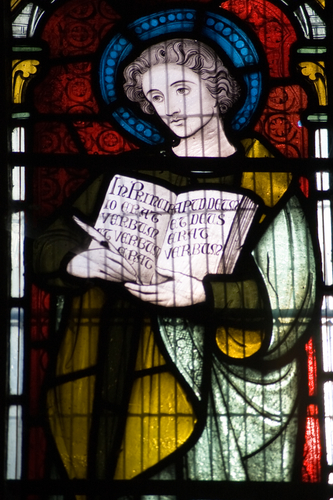The New York Times' Embarrassing Error
 One of the most famous passages in all of Christian Scriptures is the beginning to the Gospel of John. It is beautifully written and fundamental to our understanding of Jesus Christ:
One of the most famous passages in all of Christian Scriptures is the beginning to the Gospel of John. It is beautifully written and fundamental to our understanding of Jesus Christ:
In the beginning was the Word, and the Word was with God, and the Word was God. He was in the beginning with God. All things were made through Him, and without Him nothing was made that was made. In Him was life, and the life was the light of men. And the light shines in the darkness, and the darkness did not comprehend it...He was in the world, and the world was made through Him, and the world did not know Him. He came to His own, and His own did not receive Him. But as many as received Him, to them He gave the right to become children of God, to those who believe in His name: who were born, not of blood, nor of the will of the flesh, nor of the will of man, but of God.
And the Word became flesh and dwelt among us, and we beheld His glory, the glory as of the only begotten of the Father, full of grace and truth.
This passage is the basis for the doctrine of the Incarnation, central to the Christian faith.
Why in the world am I mentioning this? Well, thanks to Alan Jacobs, I was pointed to the essay "It's Alive!" in the New York Times Sunday Book Review by Gillian Silverman. Silverman is, as may soon depress you to know, an English professor at the University of Colorado at Denver. She writes about the relationship people have to their books and how this is or is not changing due to technology. But check out this passage:
After all, the relationship between human reader and “animated” book has been forged over centuries. The Bible, perhaps the first book to be characterized in these terms, was thought to be the material embodiment of Jesus Christ, “a living and breathing likeness of Him” in the words of Erasmus. Since Christ was understood to be the carnal manifestation of the Scriptures — the Word made flesh, according to the literary scholar James Kearney — the Bible was reflexively endowed with human properties. “The leaves of this booke be the armes, the handes, legges and feete” of Christ, said Bishop John Fisher in an early-16th-century sermon. The capital letters dyed in red are “the great wounds of his body, in his handes, and in his feete, and in his side.”
As Jacobs wrote: "Finally, the authorship of the Gospel according to John settled! It was some dude named James Kearney."
How that passage -- "the Word made flesh, according to the literary scholar James Kearney" -- could be written by any English professor is sad enough. That it was approved by editors is horrifying.
I know we talk about the agenda and biases of the New York Times a fair bit. But that editors there are unfamiliar with the Gospel of John is embarrassing.